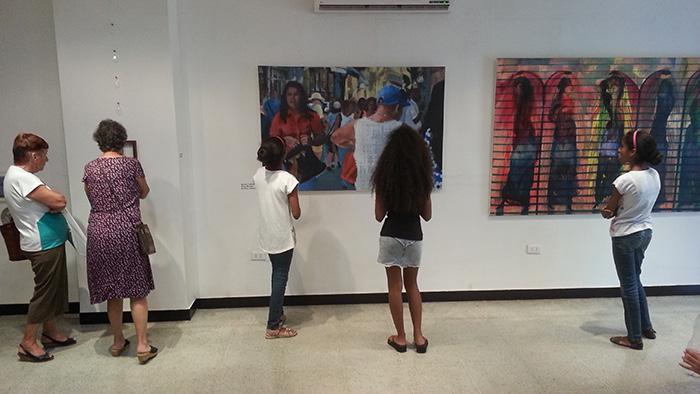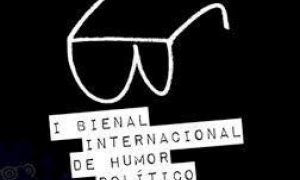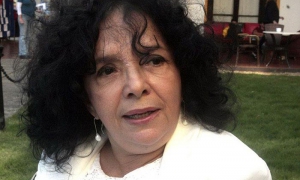
Almost impossible… misunderstandings abounded, but hope prevailed and the persistence of many led to the flowering of art in a formerly dilapidated, gloomy locale.
This is the Espacio Altamira project, part of the 12th Havana Biennial’s parallel Open Studios program, located in a Vedado apartment building, across the street from the city’s emblematic Hotel Nacional and Malecón – another community event exemplifying the Biennial’s goal of reaching broader audiences.
The acceptance of this new idea, this new space, was largely due to the efforts of a family of artists which includes painter Edel Bordón Mirabal, and his spouse, sculptor and painter Yamilé Pardo Menéndez, both professors at the historic San Alejandro National Academy of Fine Arts, and all the residents of the Altamira building, who devoted their own resources and time to the project, also consistently supported by the neighborhood’s constituency no. 34 delegate, Maritza Marquetti Zayas, a deputy in the National Assembly of People’s Power.
The fine arts have always been a human necessity and the Espacio Altamira is no exception. Here, artists seek a space where they can interact with their discourse, finding a ‘silent zone’ which, once discovered, can become a place where experiences are generated on the basis of art and its links to the community.
The physical dimension functions to incite the communicative process, in which a group of artists take advantage of this unique corner to establish connections between different levels of information and content generated by the building itself – on the historical, social, living and structural levels –the languages of which are used by each one of the artists, to communicate on the basis of what was found.
Thus, the public and the private converge, in a process in which a leading role is played by a dialogue incorporating and surpassing the visual, as is taking place throughout the 12th Biennial.
The Espacio Altamira is complemented by the open studio-workshop which Edel and Yamilé have in their apartment in the same building, bearing the number 106 on the 10th floor. Spectators interact and reflect on close to 20 works in a diverse collection which include oils on canvas; Haiku poetry (a Japanese format of 17 syllables, using about nature); sculpture; mixed media; photography; installations; and digital prints.
The space will remain open permanently for other expositions and community meetings, including accountability reports from elected officials and activities organized by local grassroots organizations, while aspiring to be an art gallery de rigeur in the neighborhood.
THE USEFUL & THE BEAUTIFUL
Yamilé, who is drawn to intervening in spaces with a daring discourse to reveal the unknown, and discover the value of what she comes across in the service of her work, explains, “Our intention emerged from the 1955 building’s very characteristics.”
She recalls something her daughter, Lucia, once said to her on the elevator, “I don’t like this building, because the people only see each other in one place, the elevator.”
The comment led Yamilé to reflect on the possibility of conceiving a project which would allow us to “to get to know each other without losing our individuality,” and the spark was lit, igniting a project to unite the useful and the beautiful.
For his part, Edel, who believes that humans naturally create mechanisms to overcome their daily existence and fears, is pleased with the impact of the Espacio Altamira, since it has demonstrated that solutions to problems can be generated from within the community itself, without waiting for someone from the outside.
A NOVELTY WITH ITS OWN MERITS
Speaking with Granma International, curator Mayra Sosa Rodríguez, from the Center for the Development of Visual Arts, emphasized the success of the Biennial’s Open studios program, an idea which took shape during the last edition of the event, mainly in Havana’s central historic district.
This year, she reported, some 60 artists have opened their studios in the municipalities of Playa, Plaza de la Revolución, Diez de octubre, Arroyo Naranjo and, of course, Habana Vieja, allowing the public to see artists at work in their own spaces, and artists can interact with the community’s conceptions and opinions.
An important experience which is here to stay, long after the conclusion of the Biennial.
EXTRA:
The Espacio Altamira project brings together a multi-disciplinary and inter-generational team, in which personal discourses are mixed and interact to generate works of art. Participating are Edel Bordón Mirabal, Yamile Pardo Menéndez, Pablo Víctor Bordón Pardo, Aissa Santiso Camiade, Jorge Braulio Rodríguez, Ignacio Carballo Cabrera, Pedro Michel Díaz Deschapell’s, Luis Blanco Rusindo, Nicolás Sánchez Noa, Carla María Bellido de Luna, José Madrigal Despaigne, Carlos José Martínez, Rafael Rodríguez Gay, Ana Rocío Mena Blanco, Pedro Tex Martínez Cuevas and Enrique Demetrio.






